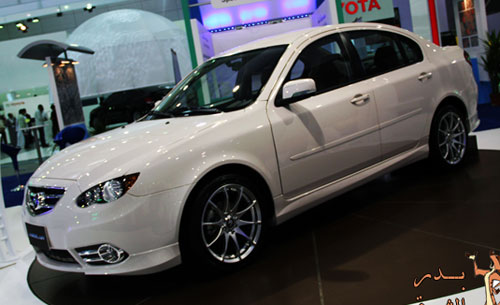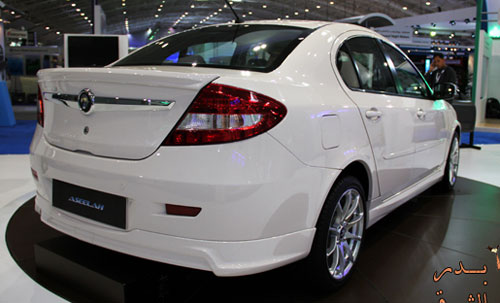
What happens when you cross a Proton Persona with the Proton Satria Neo? The result is above – the Aseelah/Aseela, designed and built by the National Program for Automobile Technology, an affiliate of the King Abdul Aziz City for Science and Technology organization. It was exhibited at the Riyadh Motor Show 2010 this month.
There was news sometime ago about KACST and Lotus Engineering teaming up to develop Saudi Arabia’s automotive industry in terms of development and manufacturing capability. It’s not surprising that one of their first cars is based on the Persona, and a collection of other parts from the Proton parts bin it seems. In another arrangement, Lotus Engineering also used the Persona/GEN2 platform when it was contracted by China’s Youngman to develop Europestar-branded cars for the Chinese market.

Middle East-based news organization The Media Line reports that KACST will set up a vehicle production line at the cost of about 60 million Saudi Riyals to produce between 2,000 to 5000 cars a year, but the report doesn’t really provide a definitive answer on whether the Aseelah will be the first product being built by the KACST production line. But they did give an indication on how much a production version of the Aseelah would be sold at – under 50,000 Saudi riyals.
This isn’t the first time we’ve seen a car from Saudi Arabia – the first was the Saudi GAZAL1 Concept based on the Mercedes-Benz G-Wagen designed by King Saud University Students. Look after the jump for more images of the Aseelah/Aseela.
[zenphotopress number=999 album=1789]
AD: Drive the Proton model of your dreams. Submit your details and Proton PJ will get in touch with you.
Looking to sell your car? Sell it with Carro.




















AI-generated Summary ✨
Comments are generally positive about the Saudi Arabia-based Aseelah car, highlighting its attractive design and potential market success in the Middle East. Some praise its modern look, comparing it favorably to other models, while a few express skepticism about its practicality for Arab consumers, who prefer larger, luxury vehicles. Several comments appreciate Proton’s strategy of international collaborations and rebadging, viewing it as a smart move to expand their market presence. There are also critical remarks about quality issues, vendor management, and the quality control process, suggesting these need improvement. Overall, the sentiment is optimistic about Proton's global growth, with some debate over design similarities and market suitability.